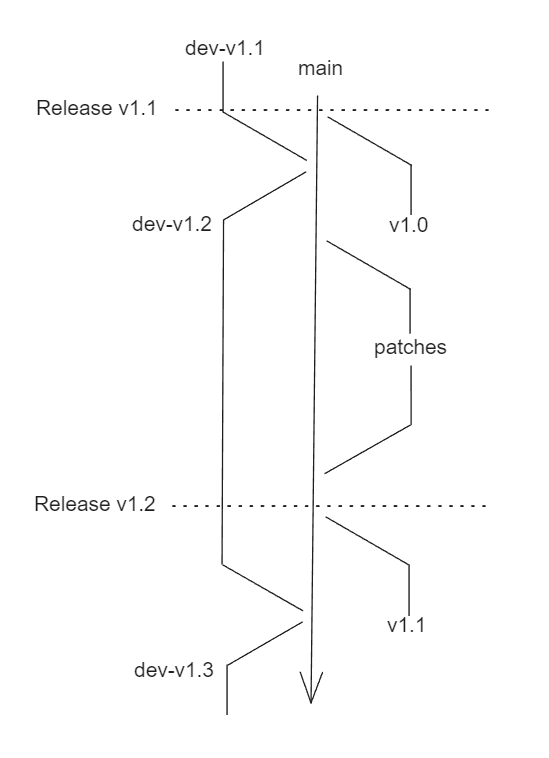Versioning Documentation
3 minute read
With the Beta release of the Management Console, we are introducing a new versioning system for the documentation website. This system will ensure that the documentation is versioned in sync with the Management Console’s minor versions. Each new minor release of the Management Console will correspond to a new version of the documentation.
Branches
Below is an outline of the branching strategy we will employ for versioning the documentation website:
main branch
The main branch will serve as the living documentation for the latest released
version of the Management Console. Following a new release, only patches and
hotfixes will be committed to this branch.
Version branches
Upon the release of a new minor version of the Management Console, a snapshot of
the main branch will be taken. This serves as an archive for the documentation
corresponding to the previous version. For instance, with the release of
Management Console version 1.1, we will create a branch from main named v1.0.
The v1.0 branch will host the documentation for the Management Console version
1.0 and will no longer receive updates for subsequent versions.
Development branches
Simultaneously with the snapshot creation, we’ll establish a development branch
for the upcoming version. For example, concurrent with the launch of Management
Console version 1.1, we will initiate a dev-v1.2 branch. This branch will
accumulate all the documentation updates for the forthcoming version of the
Management Console. Upon the release of the next version, we will merge the
dev-v1.2 branch into main, updating the documentation website to reflect the
newest version.
Hugo configuration
To maintain the versioning of our documentation website, specific adjustments
need to be made to the Hugo configuration file (hugo.toml). Follow the steps
below to ensure the versioning is correctly reflected.
Version branches
Update the
latestparameter to match the branch version. For instance, for thev1.0branch, setlatestto1.0.The
[[params.versions]]array should include entries for the current version and the upcoming version. For thev1.0branch, the configuration would be:[[params.versions]] version = "1.1" # Upcoming version url = "https://umh.docs.umh.app" branch = "main" [[params.versions]] version = "1.0" # Current version url = "https://v1-0.umh-docs-umh-app.pages.dev/docs/" branch = "v1.0"
Development branches
Set the
latestparameter to the version that the branch is preparing. If the branch isdev-v1.2, thenlatestshould be1.2.The
[[params.versions]]array should list the version being developed using the Cloudflare Pages URL. The entry fordev-v1.2would be:[[params.versions]] version = "1.2" # Version in development url = "https://dev-v1-2--umh-docs-umh-app.pages.dev" branch = "dev-v1.2" [[params.versions]] version = "1.1" # latest version url = "https://umh.docs.umh.app" branch = "main"Prior to merging a development branch into
main, update theurlfor the version being released to point to the main site and adjust the entry for the previous version to its Cloudflare Pages URL. For instance, just before mergingdev-v1.2:[[params.versions]] version = "1.2" # New stable version url = "https://umh.docs.umh.app" branch = "main" [[params.versions]] version = "1.1" # Previous version url = "https://v1-1--umh-docs-umh-app.pages.dev" branch = "v1.1"
Always ensure that the [[params.versions]] array reflects the correct order of
the versions, with the newest version appearing first.
